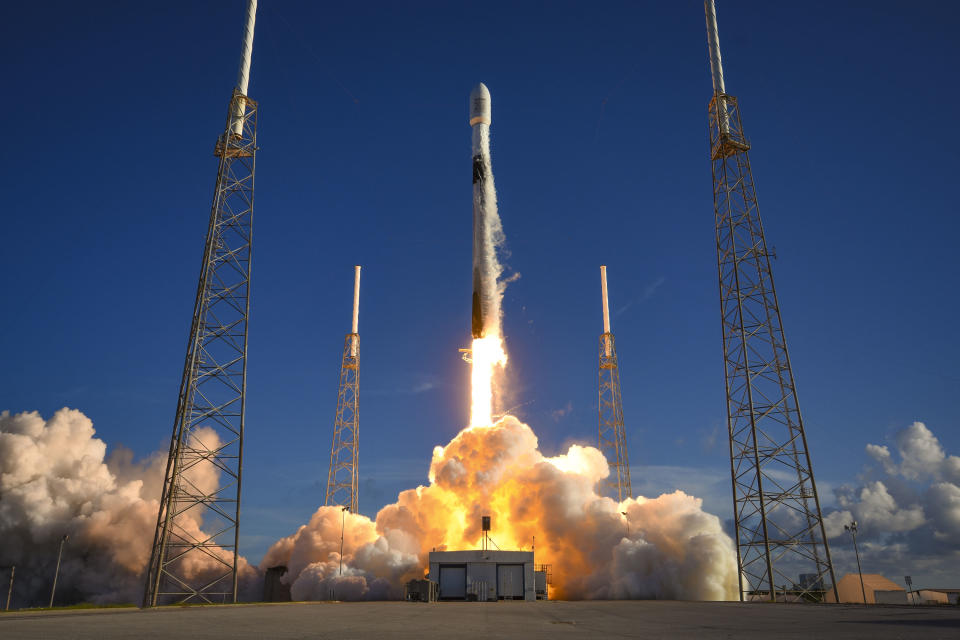SpaceX launches South Korea's first moon mission, an orbiter named Danuri

South Korea is headed for the moon.
Last night, the country launched its first-ever lunar mission — in fact, its first-ever mission beyond low Earth orbit. Formerly called the Korea Pathfinder Lunar Orbiter (KPLO), the mission, managed by the Korea Aerospace Research Institute (KARI), is now named Danuri, a play on the Korean words for "moon" and "enjoy." Its primary goal is to test South Korea's lunar spacecraft technology before it makes a bid to land on the surface, tentatively in 2030 if all goes well.
Danuri launched atop a SpaceX Falcon 9 rocket from Cape Canaveral Space Force Station at 7:08 p.m. EDT on August 4, with the rocket's booster landing successfully on the drone ship "Just Read the Instructions" just a few minutes after liftoff.
The spacecraft is now on a very circuitous route to the moon. It will first fly toward the sun before looping back toward its destination, arriving in lunar orbit in mid-December. Taking this longer route, known as a ballistic lunar transfer, uses a gravity assist by the sun to make the journey more fuel-efficient.
When Danuri arrives at the moon, stationed in a 62-mile-high orbit, it will perform research with its six science instruments: a magnetometer, a gamma-ray spectrometer, an experimental communications system and three cameras, including one designed by NASA that is sensitive enough to see inside the moon's permanently shadowed craters, which could contain water ice.
Should the mission be successful, South Korea will become the eighth political body to execute a moon mission, joining the United States, the former Soviet Union, China, Japan, India, Luxembourg and the European Union. The majority of those missions were flybys and orbiters, plus a handful of robotic landings, and only six human landings.
It's a busy year for the moon. NASA recently launched its CAPSTONE mission, and its Artemis I mission is due to launch later this month. Russia is slated to make its return to the moon for the first time since 1976 with its Luna-25 lander, scheduled to launch late this year. And several private organizations are moon-bound, including American companies Astrobotic and Intuitive Machines, which will fly under NASA's Commercial Lunar Payload Services (CLPS) program, as well as Japanese company ispace, which will carry a rover built by the United Arab Emirates.
